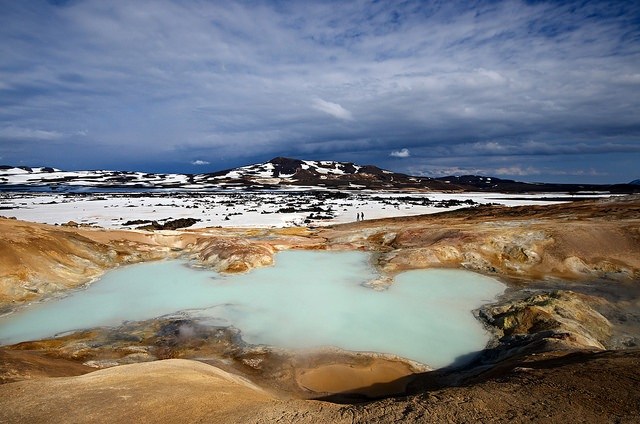
A program is leading representatives of Arctic nations to Alaska, Canada, Iceland and Greenland to look at the microgrids in remote communities.
The Arctic Remote Energy Network Academy, or ARENA, is in the middle of its pilot year and gives participants a look at innovative remote energy networks. They hope to gather information and contacts that could benefit their communities.
This week, some academy participants are in Finland to present at the Arctic Energy Summit, which begins today and continues until Wednesday.
In March, participants stopped by Yellowknife, Canada for a week. In June, they visited Kotzebue, Fairbanks and Nome.
One participant — George Roe is a University of Alaska research professor affiliated with the Alaska Center for Energy and Power, one of the organizations behind ARENA — visited Kodiak. And next, they’ll go to Iceland.
Roe said networking is a big part of the program.
“It’s a great opportunity for us to be interacting and building strong, respectful peer relationships internationally at the grass roots level,” Roe said.
The Lower 48 can learn from successful remote energy systems and move toward greater resiliency, he said, especially if they figure out how to encourage private investment instead of relying on grants.
Kodiak Area Native Association economic development project manager Tyler Kornelis’ goal is to build his network and learn about the different technologies out there.
Kodiak boasts an isolated grid that uses wind and hydropower to provide its residents with affordable, green energy. Kornelis said both the city of Kodiak and the city of Port Lions tap into that grid, but the other communities of Akhiok, Karluk, Larsen Bay, Old Harbor and Ouzinkie do not.
“They’re not all 100 percent diesel but in general they have costs of power that on average are more than double what we’re paying in Kodiak here,” Kornelis said. “Our success is great, but you can’t lose sight of the challenges that these communities that are so close to us are having.”
Kornelis would like to bring back his experiences and connections to push forward some of the communities’ projects and goals.
“It’s a huge priority for the communities in the Kodiak region to not only produce more energy, ideally with renewable resources, but also to find ways to reduce their energy consumption through conservation or energy efficiency activities,” Kornelis said.
Kornelis said the last site visit with be Reykjavik, Iceland, where they’ll focus on geothermal heat.
Iceland meets most of its energy demands with hydropower and geothermal power, said Ludvik Georgsson, the director of the United Nations University Geothermal Training Program.
Kornelis said they’ll show participants how Iceland uses geothermal power for green houses, spas, and electricity generation.
Georgsson encourages Alaskans to look for geothermal resources in the vicinity of their communities.
“You have, for example, hot springs not far away from Nome, which could be utilized for heating or greenhouses and production of vegetables for the local society instead of having to import it all from far away,” Kornelis said.
ARENA participants will fly to Iceland to meet with Georgsson and his colleagues in November.
Kayla Deroches is a reporter at KMXT in Kodiak.




